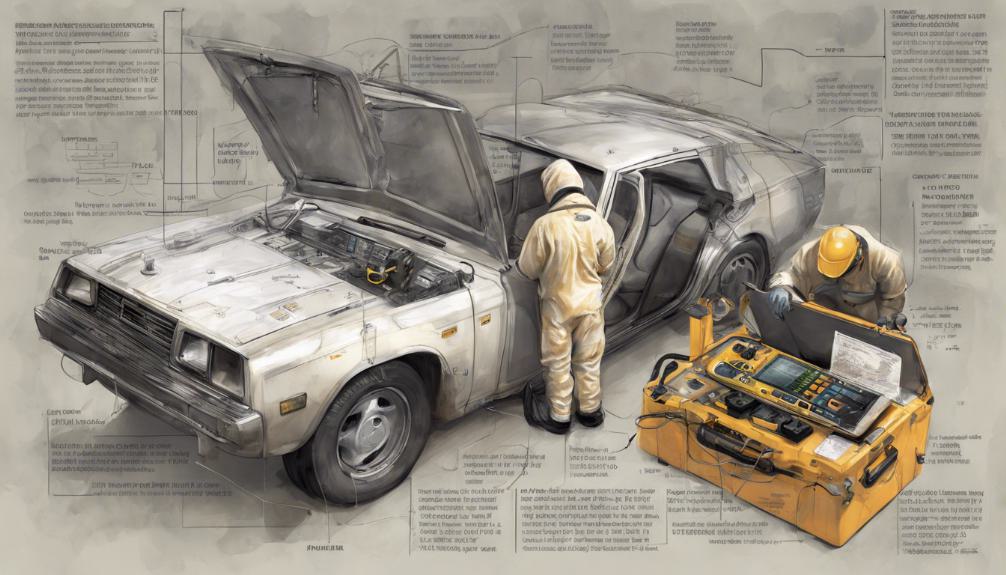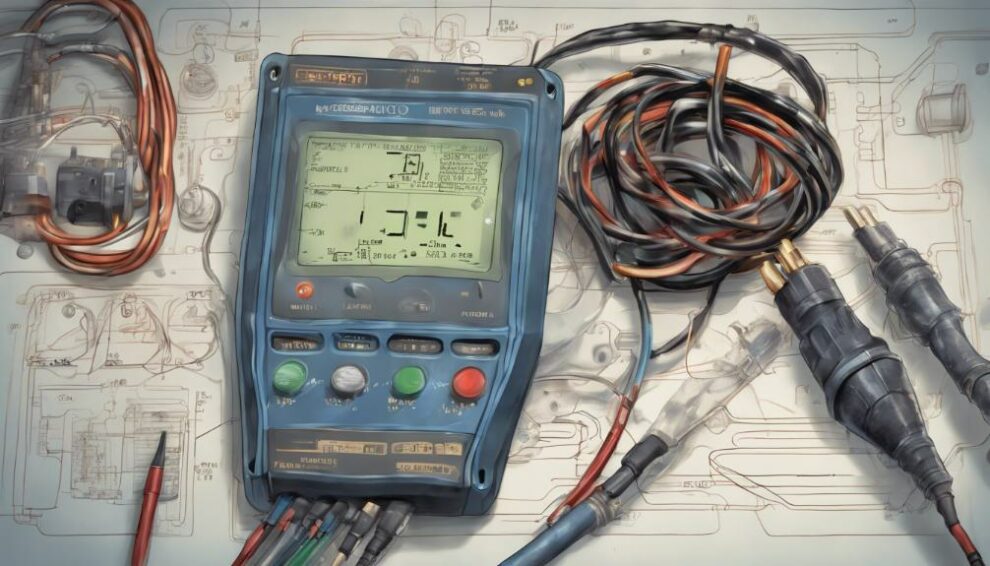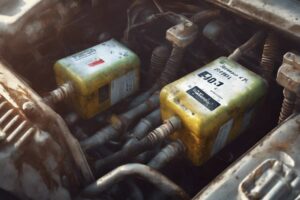If you’re dealing with the P205B code on reductant tank temperature sensor circuit analysis, it’s important for top vehicle performance. Understanding diagnostic steps is key.
Start by evaluating the sensor circuit and checking for performance issues. Verify sensor resistance and wiring integrity through voltage testing to identify discrepancies accurately.
Common causes of sensor circuit problems include malfunctions and wiring faults, impacting DEF system operation. Addressing these promptly is essential. Solutions may include GM’s special coverage or warranty for accurate diagnosis.
Regular maintenance is essential for peak performance. Mastering these steps ensures proper emissions system functionality.
Key Points
- Monitoring DEF temperature crucial for emissions system efficiency.
- Sensor failure triggers P205B fault code.
- Troubleshooting techniques essential for diagnosis accuracy.
- Check sensor’s resistance and wiring for issues.
- Prompt addressing of sensor circuit issues vital for DEF system.
Importance of Reductant Tank Temperature Sensor

The reductant tank temperature sensor is an essential component for monitoring DEF temperature in your vehicle.
This sensor is crucial for ensuring the DEF stays at the right temperature for the emissions system to work efficiently.
Temperature fluctuations can affect the performance of the SCR system, making sensor accuracy vital.
The sensor constantly measures the DEF temperature, helping your vehicle maintain emission compliance and peak performance.
If the sensor fails or provides inaccurate readings, it can trigger fault codes like P205B, indicating a circuit range or performance issue.
Regular monitoring and maintenance of this sensor are necessary to prevent such problems.
By keeping an eye on temperature fluctuations and ensuring the sensor is functioning accurately, you can help avoid potential issues with your vehicle’s emissions system.
Proper care of the reductant tank temperature sensor is key to keeping your vehicle running smoothly and meeting emission standards.
Symptoms of P205B Code
Monitoring the symptoms of the P205B code can help you identify potential issues with the Reductant Tank Temperature Sensor circuit in your vehicle.
Common signs of this problem include the illumination of the check engine light. If you notice this indicator, it’s important to address it promptly to prevent any further complications.
The P205B code can also lead to reduced vehicle performance, affecting your driving experience. Then, it may trigger warning messages related to the Diesel Exhaust Fluid (DEF) system, indicating a need for attention.
Understanding these symptoms is vital for early detection and resolution of the underlying issue.
When faced with the P205B code, troubleshooting techniques can be employed to pinpoint the exact cause of the problem. Addressing this issue promptly is essential to prevent any further damage to your vehicle.
Ignoring these symptoms can have performance implications and may lead to more severe issues down the line. Therefore, it’s important to take the necessary steps to diagnose and repair the Reductant Tank Temperature Sensor circuit efficiently.
Diagnostic Steps for Circuit Analysis

Begin by evaluating the reductant tank temperature sensor circuit to identify potential issues that may be causing the P205B trouble code. Troubleshooting techniques are important in this process.
Start by checking the circuit for any range or performance issues related to the temperature sensor. Verify the sensor’s resistance and wiring connections for faults.
Voltage testing methods can help pinpoint discrepancies in the circuit.
Look out for anomalies that extreme temperature variations may have caused, affecting the sensor’s functionality. Proper circuit analysis is vital for resolving the reductant tank temperature sensor issue efficiently.
Common Causes of Sensor Circuit Issues
When diagnosing sensor circuit issues, focus on potential sensor malfunctions or wiring faults that could be causing the P205B trouble code to appear. Common causes of sensor circuit issues related to the P205B code include:
- Sensor Malfunction: Check for sensor malfunctions by testing the sensor’s resistance or output signal. A malfunctioning sensor can provide inaccurate data to the vehicle’s computer, triggering the P205B trouble code.
- Wiring Faults: Inspect the wiring harness connected to the reductant tank temperature sensor for any signs of damage, corrosion, or loose connections.
Faulty wiring can disrupt the sensor’s communication with the vehicle’s ECM, leading to code P205B.
- Environmental Factors: Extreme temperature changes can impact the sensor circuit’s performance.
Make sure that the sensor isn’t exposed to conditions that could affect its readings, potentially causing the P205B trouble code to activate.
- DEF System Impact: Faulty sensor readings can trigger the P205B trouble code and affect the Diesel Exhaust Fluid (DEF) system’s operation.
Addressing sensor circuit issues promptly is important for maintaining the proper functioning of the DEF system.
How Can I Fix the Reductant Tank Temperature Sensor Circuit Analysis Issue If I’m Also Dealing with High Voltage in Knock Sensor 1 Circuit?
When tackling high voltage knock sensor issues, it’s essential to address the reductant tank temperature sensor circuit analysis problem. Focus on diagnosing and fixing each issue separately to ensure the proper functioning of both systems in your vehicle. Seek professional assistance if necessary.
Repair and Replacement Solutions

For effective resolution of the reductant tank temperature sensor issue, consider exploring the special coverage provided by GM for select Chevrolet Silverado HD and GMC Sierra HD models with a 6.6L diesel engine affected by the P205B trouble code.
If you encounter a sensor malfunction triggering the P205B trouble code, it’s advisable to first utilize troubleshooting techniques to pinpoint the root cause accurately.
GM’s warranty coverage includes repair options that may involve free repairs or replacements for the reductant tank temperature sensor issue.
Dealerships may offer these services under the Special Coverage Service Bulletin SB-10058722-5760, which extends coverage for up to 10 years or 120,000 miles, regardless of ownership or purchase date.
This inclusive coverage encompasses the repair or replacement of diesel emission reduction fluid tank components for affected vehicles.
Hence, if you suspect sensor issues related to the P205B trouble code, inquire with your dealership about the available warranty coverage and repair solutions to address the problem effectively.
Maintenance Tips for Optimal Performance
To guarantee peak performance of your reductant tank temperature sensor, prioritize regular maintenance checks and inspections of the sensor circuit for wear or damage.
Here are some essential maintenance tips to make sure your sensor functions at its best:
- Regular Inspections: Conduct routine checks to look for any signs of wear or damage on the sensor circuit. Addressing issues promptly can prevent inaccurate temperature readings.
- Proper Connection: Make certain that the sensor circuit is correctly connected to avoid connectivity issues that could lead to error codes like P205B.
- Resistance Levels: Monitor the resistance levels in the sensor circuit as deviations can impact temperature readings. Maintaining the correct resistance is vital for accurate sensor operation.
- Temperature Calibration: Periodically calibrate the sensor to ensure it’s accurately reading the reductant tank temperature. Calibration helps in preserving the sensor’s precision over time.
As an Amazon Associate we earn from qualifying purchases.










